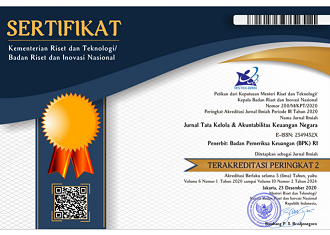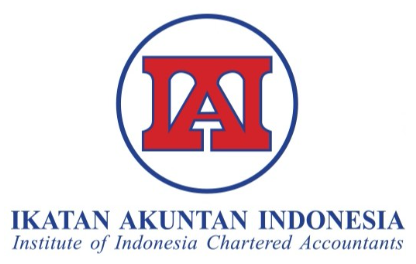APPLICATION OF INVENTORY TURNOVER ANALYSIS ON INDONESIAN MINISTRY/AGENCY FINANCIAL STATEMENT
DOI:
https://doi.org/10.28986/jtaken.v5i2.377Keywords:
inventory, turnover, accrual, disclosure, government.Abstract
Inventory turnover is a simple accounting analysis method seldom used by the user of Indonesian governmental organization’s financial statement due to lack of accrual information in the past. The opportunity for the application of this analysis arrived in 2015 along with the implementation of accrual accounting basis by the Indonesian government. This study observes the Indonesian ministry/agency (MA) inventory management focusing on the inventory average flow time, during the 2017 and 2018 period. The study shows that among 86 MAs, 62 MAs have desired average flow time. The other 24 MAs have high average flow time with 12 of them also have unstable average flow time. While several MAs disclosed information related to their average flow time, most MAs did not. Thus, they failed to communicate their conditions to their stakeholders. The average flow time can be used as a starting point for the managers, auditors, and other stakeholders to further analyze government inventory management. Better inventory management can reduce costs and improve the government planning process. Therefore, the government may be capable of allocating their budget for other programs or activities to deliver higher value for the public.
References
American Productivity and Quality Center. (2005). Inventory optimization: Balancing the asset versus service tradeoff. Houston: APQC.
Anupindi, R., Chopra, S., Desmukh, S. D., Van Mieghem, J. A., & Zemel, E. (2011). Managing business process flow: Principles of operational management, Third edition. New Jersey: Pearson Education, Inc.
Bondy, H. (1991). Inventory carrying cost in
government. Canadian Public Administration, 34(3), 527-530.
Bragg, S. M. (2005). Inventory accounting - a comprehensive guide. New Jersey: John Wiley & Sons, Inc.
Feng, M., Li, C., McVay, S. E., & Skaife, H. (2015). Does ineffective internal control over financial reporting affect a firm’s operations? Evidence from firms’ inventory management. The Accounting Review, 90(2), 529-557.
Government Accounting Standard Committee. (2019). Government accounting standards. Jakarta.
Kanet, J. J. (2004). Mean flowtime and inventory in production systems: A finite time analogue to Little’s Law. International Journal of Production Economics, 91, 37-46.
Kunz, N., Reiner, G., & Gold, S. (2014). Investing in disaster management capabilities versus pre-positioning inventory: A new approach to disaster preparedness. International Journal of Production Economics, 157, 261-272.
Lee, H.-H., Zhou, J., & Hsu, P.-H. (2015). The role of innovation in inventory turnover performance. Decision Support System, 76, 35-44.
Little, J. D. (2011). Little's Law as viewed on its 50th anniversary. Operations Research, 536-549.
Mellor, T. (1996). Why government should produce Balance Sheet. Australian Journal of Public Administration, 55 (1), 78-81.
Morey, R. C. (1985). Estimating service level impact from changes in cycle count, buffer stock, or corrective action. Journal of Operation Management, 5(4), 411-418.
Poppe, J., Basten, R. J., Boute, R. N., & Lambrecht, M. R. (2017). Numerical study of inventory management under various maintenance. Reliability Engineering and System Safety, 168, 262-273.
Toelle, R. A., & Tersine, R. J. (1989). Excess inventory: Financial asset or operational liability? Production and Inventory Management Journal, 30(4), 32-25.
Warren, K. (2013). The development and use of public sector balance sheets. In R. Allen, R. Hemming, & B. H. Potter (Eds.), The International Handbook of Public Financial Management (pp. 558-572). New York: Palgrave Macmillan.
Downloads
Submitted
Accepted
Published
How to Cite
Issue
Section
License

Jurnal Tata Kelola dan Akuntabilitas Keuangan Negara is licensed under
a Creative Commons Attribution-ShareAlike 4.0 International License




















